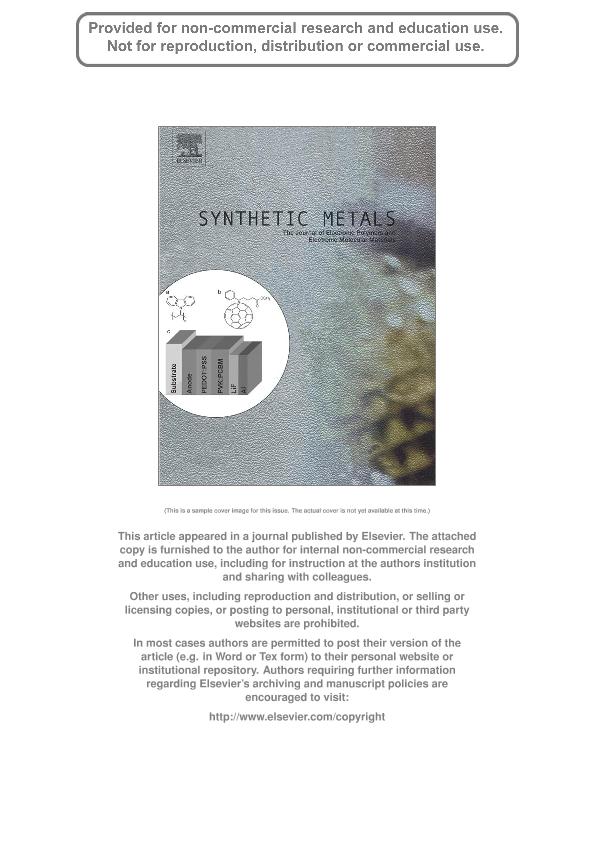Artículo
Composite films based on shape memory polyurethanes and nanostructured polyaniline or cellulose–polyaniline particles
Fecha de publicación:
20/10/2012
Editorial:
Elsevier Science Sa
Revista:
Synthetic Metals
ISSN:
0379-6779
Idioma:
Inglés
Tipo de recurso:
Artículo publicado
Clasificación temática:
Resumen
Conducting polyaniline (PANI) and PANI coated cellulose (PANI-NC) nanofibers doped with hydrochloric acid were synthesized by a sonochemical method and re-dispersed in methyl isobutyl ketone (MIBK) by ultrasonication. Composite films were prepared by mixing the dispersions with a segmented polyurethane (SMPu) solution in MIBK, followed by casting and solvent evaporation. PANI-NC fibers resulted more conductive than neat PANI ones and the same behavior was found for the resulting composite films, being the last ones in the range of semi-conductive polymers. As the concentration of nanofibers was maintained under 5 wt%, the thermal, mechanical and shape memory properties of the polyurethane matrix were not negatively affected or even slightly improved with the addition of nanofibers. In particular, the addition of any of the fibers led to an increase in the tensile modulus without decreasing the elongation at break, while the use of PANI ones resulted in an increase of the recovery capacity of the samples and the incorporation of PANI-NC fibers led to an increase in the recovery force. However, the transparency of the neat SMPu was lost, since even the less concentrated composite films resulted homogeneously green colored. On the other hand, no evidence of nanofiber percolation through the matrix was found.
Palabras clave:
Composites
,
Polyaniline
,
Nanocellulose
,
Shape Memory Polyurethanes
Archivos asociados
Licencia
Identificadores
Colecciones
Articulos(INTEMA)
Articulos de INST.DE INV.EN CIENCIA Y TECNOL.MATERIALES (I)
Articulos de INST.DE INV.EN CIENCIA Y TECNOL.MATERIALES (I)
Citación
Casado, Ulises Martín; Quintanilla, R.M.; Aranguren, Mirta Ines; Marcovich, Norma Esther; Composite films based on shape memory polyurethanes and nanostructured polyaniline or cellulose–polyaniline particles; Elsevier Science Sa; Synthetic Metals; 162; 17-18; 20-10-2012; 1654-1664
Compartir
Altmétricas




